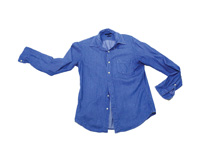Quiz - Sun Suit
Every summer the warnings return—use sunblock or get burned. You’ve heard it before, but this is one message that bears repeating, especially for children. Skin damage from the sun’s rays can increase the risk of developing skin cancer later in life. Even on cloudy days, it is recommended that people reapply sunscreen every two hours. But there are additional steps you can take that don’t require sticky lotion. Certain pieces of clothing can offer protection that never wears off. Take our quiz to learn more:
1. Using sunscreen is only one part of an overall strategy of protecting the skin from harmful UV rays.
A. True
B. False

2. A factor to consider when buying clothes for outdoor activities is ______.
A. What fibers the clothing is made of
B. The ultraviolet protection factor, or UPF
C. How much skin the garment covers
D. The tightness of the fabric’s weave
E. All of the above
3. For garments that include a UPF (ultraviolet protection factor) rating, people should look for the rating to be at least ___.
A. 15
B. 20
C. 30
D. 50
4. There’s no way to swim comfortably with more clothing on than a bathing suit.
A. True
B. False
5. Which item is NOT worth bringing to your day at the beach or the pool?
A. A wide-brimmed hat (at least 3” in diameter) that shades the neck, ears, and face
B. Sunglasses that block UVA and UVB rays
C. Extra sunscreen with SPF of 30 or higher
D. High-UPF bikini

Answers:
A. True. People also need to seek shade and limit their exposure between 10 a.m. and 4 p.m., when UV rays are the strongest. They must also use hats and other clothing wisely.
E. All of the above. UV rays can reach the skin through the spaces between the woven fibers of a garment. Tightly-woven fabrics like twill, which is used to make denim, will offer more protection than a sheer fabric.
C. 30. A rating of 50+ is even better, especially for clothing worn mostly outdoors.
B. False. A swim shirt, also known as a rash guard, is made of lightweight and elastic material that can cover a person’s upper body without weighing him or her down. Many swim shirts carry a UPF rating of 50 or higher.
D. High-UPF bikini. A high-UPF will do little good in clothing that doesn’t cover much skin. Wear a rash guard when swimming and have beach skirts or sarongs ready when you leave the water.
Sources: The Health Library and The Skin Cancer Foundation.